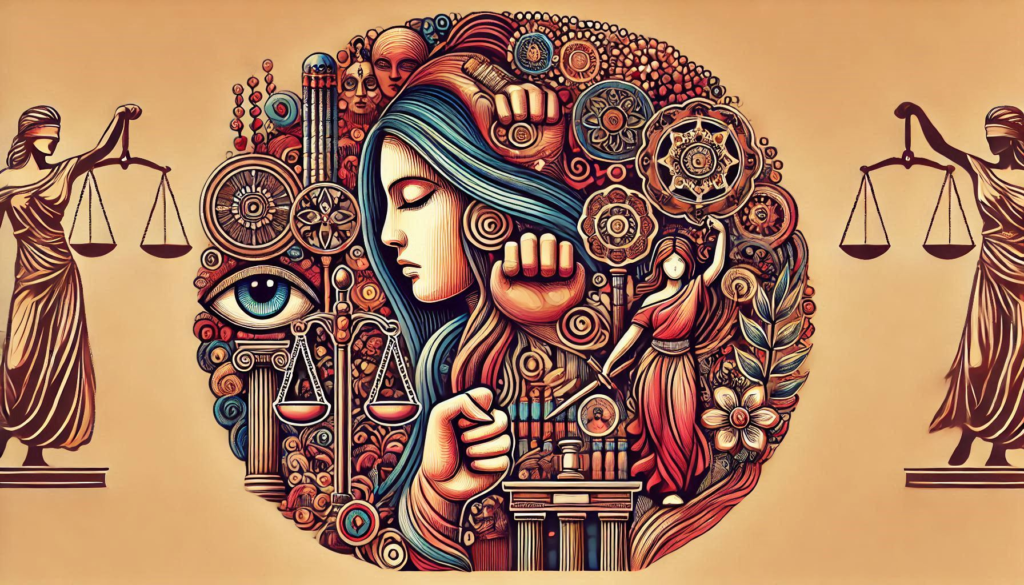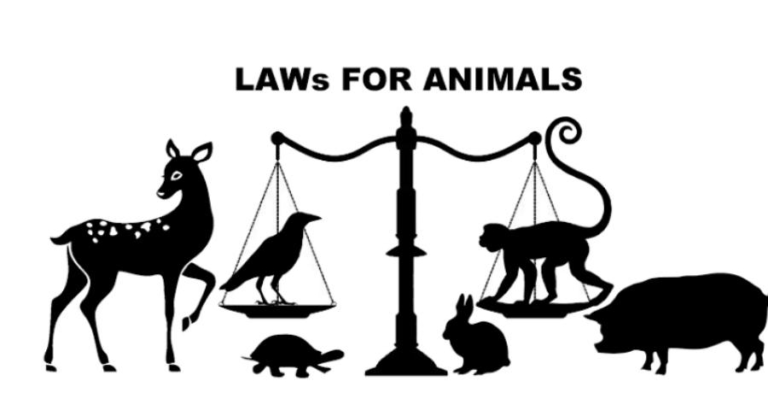
Introduction
In the layered anatomy of feminist social movements like #Metoo, knowledge of legal rights emerges as a powerful instrument of change. Especially in a country like India, where the landscape is not only panoramic but also multiplexed, women emerge from generational patriarchal structures where legal rights remain an alien vocabulary—a distant, incomprehensible language of empowerment. For the majority, legal entitlements exist as abstract concepts, far removed from their lived realities where traditional hierarchies and unwritten social codes reign supreme, rendering constitutional protections virtually invisible.
Understanding legal rights is not about dusty legal tomes or abstract principles—it is about absolute protection, dignity, and the power to shape one’s destiny. A legal system is not simply a set of rules but a living, breathing mechanism for social change. The creation and sustenance of any law, any provision, is a testament to the tussle for equality, a bridge between the world as it is and the world as it should be. These are not just words on paper but powerful tools that can transform individual lives and challenge deeply entrenched social structures.
They represent hope—carefully crafted, strategically implemented, and continuously evolving to dismantle barriers and create genuine opportunities for those who live at the margins—while occasionally progressive, judicial pronouncements are frequently entangled in patriarchal structures. Laws become paper tigers, their roar muted by the silence of systemic indifference and institutional inertia.
This disconnect is not a failure of legislation alone but a profound reflection of broader societal contradictions. Legal rights, no matter how meticulously crafted, cannot single-handedly dismantle generations of deeply rooted gender hierarchies. They require a simultaneous transformation of social consciousness, economic structures, and cultural narratives. These contradictions, deeply ingrained in the fabric of society, present a complex and multifaceted challenge to the realization of women’s legal rights.
The accurate measure of legal frameworks lies not in their eloquent articulation but in their capacity to effect tangible change in women’s lived experiences—a metric India’s legal system continues to fall critically short of. There is an urgent need for comprehensive reforms that address not just the laws on paper but also their implementation and the societal attitudes that perpetuate gender inequality. The time for action is now.
Constitutional Framework and Foundations
The Indian Constitution is the cornerstone of women’s legal rights, emphasizing equality, liberty, and justice. Article 14 guarantees equality before the law, while Article 15 prohibits discrimination based on sex. Article 16 extends this mandate to public employment, aiming to dismantle barriers to economic empowerment. Article 21, which safeguards life and personal liberty, has been expansively interpreted to include the right to live with dignity, privacy, and freedom from exploitation.
The Directive Principles of State Policy further underscore the commitment to gender justice. Articles 39(a) and 39(d) advocate equal access to livelihood and equal pay for equal work, while Article 42 mandates provisions for maternity relief. These provisions collectively shape the legal landscape, laying the foundation for various legislative interventions to protect women’s rights.
Key Legislative Interventions
The legal regime in India comprises numerous statutes addressing various dimensions of gender inequality and violence against women. These legislations, though progressive on paper, face challenges in their implementation.
- Protection of Women from Domestic Violence Act, 2005 (PWDVA): Recognizing the pervasive nature of domestic violence, this law defines abuse broadly to include physical, sexual, emotional, and economic harm. It provides civil remedies such as protection orders, residence orders, and monetary relief. While revolutionary, societal stigma and fear of retaliation deter many women from seeking legal recourse. Furthermore, enforcement mechanisms remain weak in rural areas due to inadequate resources and training.
- Dowry Prohibition Act, 1961: The practice of dowry, despite its prohibition, continues to be a significant source of violence against women. The act criminalizes the exchange of dowry, but cultural acceptance of this tradition undermines its effectiveness. Dowry-related deaths and harassment cases, especially in northern India, remain alarmingly high.
- Criminal Law (Amendment) Act, 2013: Enacted in response to the 2012 Nirbhaya gang rape case, a brutal incident that sparked widespread protests and international outrage, this law expanded the definition of sexual offenses. It introduced harsher penalties for crimes such as rape, stalking, acid attacks, and sexual harassment. However, societal reluctance to report sexual violence, coupled with procedural delays such as lengthy court processes and investigations, limits its impact. Based on the Vishakha guidelines, this law mandates the establishment of Internal Complaints Committees in workplaces to address grievances. However, compliance remains inconsistent, particularly in informal sectors, leaving many women vulnerable to harassment without recourse.
- Prohibition of Child Marriage Act, 2006: This law seeks to prevent child marriages, a practice deeply rooted in socio-cultural traditions. Despite its existence, enforcement challenges persist, particularly in rural areas where child marriage is normalized.
- Maternity Benefit (Amendment) Act, 2017: This law aims to support working mothers by extending maternity leave to 26 weeks and mandating crèche facilities. However, its benefits are limited to women employed in formal sectors, excluding a significant proportion of women employed in informal and unorganized labor, thereby highlighting the urgent need for broader coverage. The inclusivity of laws is crucial for ensuring gender equality in all sectors of society.
- Equal Remuneration Act 1976:In India, the right to equal pay is a fundamental protection under the Equal Remuneration Act of 1976(ERA). This law ensures that men and women performing the same work or work of a similar nature are compensated equally. It also prohibits discrimination in recruitment and promotions, guaranteeing that gender does not play a role in employment decisions. Equal pay is essential in empowering women and ensuring economic independence, especially in male-dominated industries.
- The Immoral Traffic Prevention Act 1956: The Immoral Traffic Prevention Act, formerly the Suppression of Immoral Traffic in Women and Girls Act (SITA), was revised and renamed in 1986. In 1956, the Suppression of Immoral Traffic in Women and Girls Act (SITA) was enacted in response to India’s signing of the International Convention on the Prevention of Immoral Trafficking in 1950. Sexual exploitation of both men and women is now a punishable offense under the ITP Act.

Cultural and Structural Barriers
Despite progressive laws and judicial pronouncements, deep-seated cultural norms and patriarchal structures often impede the realization of women’s rights.
- Patriarchy and Social Conditioning: The ingrained belief in male superiority perpetuates practices like dowry, honor killings, and restrictions on women’s mobility. Women often face backlash for asserting their rights, including ostracization and violence.
- Economic Dependence: Economic vulnerability exacerbates women’s inability to exercise their rights. With a significant gender wage gap and limited access to formal employment, many women remain dependent on male family members, hindering their autonomy.
- Honor and Family Reputation: Cultural emphasis on family honor often silences women who experience violence or harassment. Fear of stigma and societal pressure to preserve familial harmony discourages reporting and seeking justice.
- Lack of Awareness: Many women, particularly in rural areas, must know their legal rights. Limited legal literacy campaigns and inadequate outreach contribute to this knowledge gap, leaving women ill-equipped to navigate the legal system.
Challenges in Enforcement
The gap between legislative intent and practical enforcement remains a significant hurdle.
- Institutional Barriers: Police apathy, judicial delays, and corruption within enforcement agencies often deny women timely and effective redress. The low conviction rates in cases of gender-based violence underscore systemic inefficiencies.
- Underreporting: Social stigma and fear of retaliation deter many women from reporting crimes. For example, dowry-related violence and marital rape are grossly underreported due to societal normalization and lack of institutional support.
- Resource Constraints: Inadequate funding and infrastructure weaken the capacity of agencies tasked with implementing women-specific laws. Shelters for survivors of domestic violence, legal aid services, and crisis centers remain insufficient to meet the demand.
The barriers to women’s equality are profoundly systemic and multilayered, extending beyond simple statistical representations. At the core of these challenges lie persistent social norms and cultural practices that perpetuate inequality—with child marriage and female genital mutilation symbolizing the most visible manifestations of deeply entrenched discrimination.
Economic marginalization compounds these challenges. Women face significant workplace discrimination, participating in the labor force at dramatically lower rates than men and earning substantially less when they do work. Globally, women earn just 51 cents for every dollar men earn, a stark indicator of systemic inequity. This economic disadvantage is further exacerbated
by an unbalanced burden of unpaid care work, with women spending 2.3 more hours daily on unpaid responsibilities compared to men.
Structural impediments extend into critical domains like education, healthcare, and political representation. Women occupy merely 27 percent of parliamentary seats and 28 percent of management positions, critically limiting their ability to influence policy and decision-making. An estimated 110 million girls might remain out of school by 2030, perpetuating cycles of economic and social marginalization.
The challenges are compounded by inadequate funding and legal frameworks. Only 4% of bilateral aid targets gender equality initiatives, while 28 countries still lack laws granting women equal marriage rights. Violence further undermines women’s progress, with 245 million women experiencing physical or sexual violence annually.
Food insecurity, lack of clean energy access, and extreme poverty intersect to create a complex web of challenges that disproportionately impact women. By 2030, nearly 340 million women could be living in extreme poverty, surviving on less than $2.15 daily—a stark reminder of the urgent need for comprehensive, intersectional approaches to gender equality.

Intersectionality and Marginalized Women
Intersectional discrimination compounds the challenges faced by women from marginalized communities.
- Dalit Women: Dalit women are particularly vulnerable to caste-based violence, including sexual assault and land-related disputes. Laws like the Scheduled Castes and Scheduled Tribes (Prevention of Atrocities) Act, 1989, often fail to provide adequate relief due to casteist attitudes within law enforcement.
- Muslim Women: Muslim women face dual marginalization due to gender and religion. Discriminatory personal laws, coupled with socio-economic deprivation, limit their access to education, healthcare, and employment.
- Tribal Women: Women from tribal communities face displacement, loss of livelihoods, and violence due to development projects. Patriarchal customs within tribal societies further restrict their participation in decision-making.
Conclusion
A comprehensive approach to empowering women requires multifaceted interventions: enhancing legal literacy through nationwide awareness campaigns, implementing gender-sensitive policing and judicial reforms, promoting economic empowerment and skill
development, strengthening institutional support through well-resourced women’s commissions, challenging cultural norms via community engagement, and creating holistic support systems that integrate legal aid, healthcare, and rehabilitation services. The need of the hour is to simultaneously address knowledge gaps, institutional barriers, and societal attitudes. Only then can we transform legal rights into meaningful social progress for women.
Laws alone cannot dismantle deeply entrenched patriarchy and cultural biases. Bridging the gap between legislative provisions and their practical impact requires a concerted effort from the government, judiciary, civil society, and individuals. True empowerment creates an ecosystem where women can exercise their rights without fear, fostering a society that upholds dignity, respect, and equality. Through education, economic inclusion, and cultural transformation, India can pave the way for a future where women’s rights are enshrined in law and realized in everyday life.




